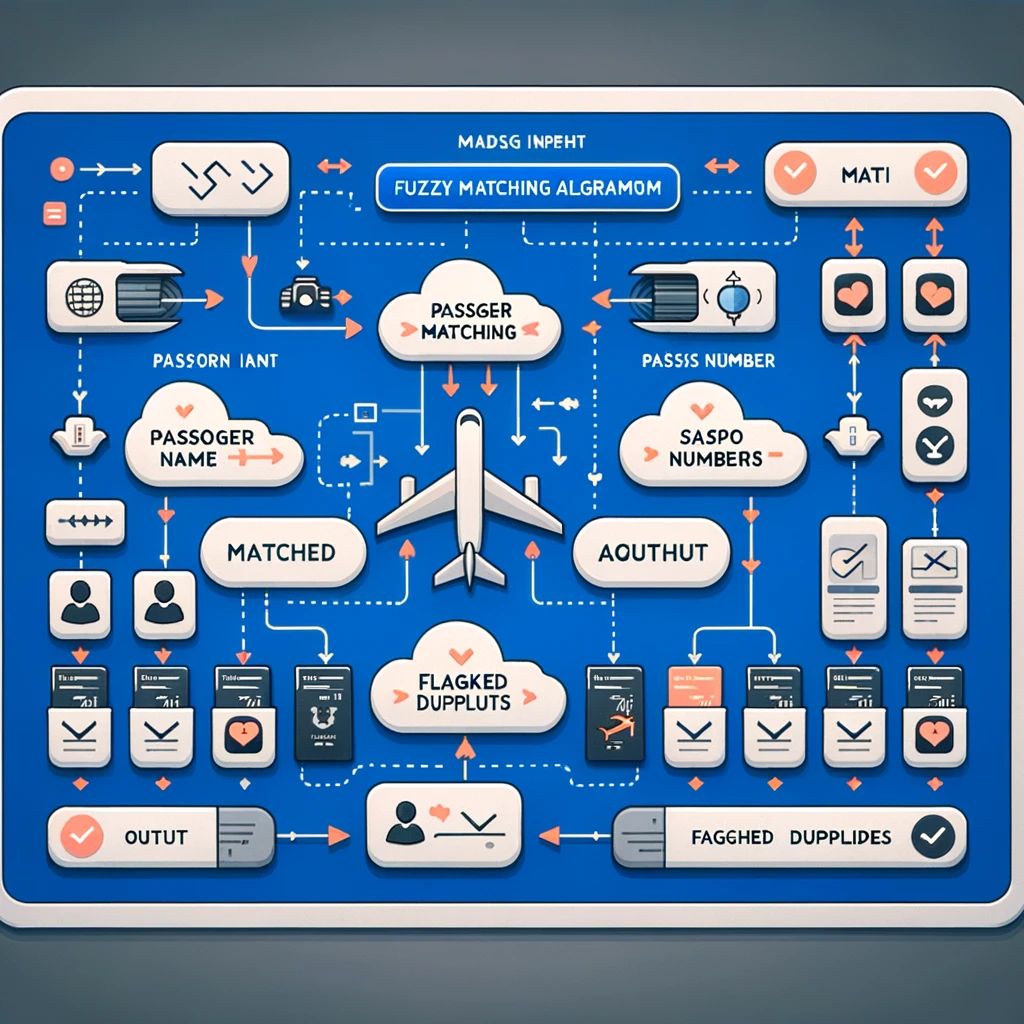When I first started working in the travel industry, I quickly realized that ensuring the accuracy of passenger data in a flight booking system was critical. Duplicate passenger records frequently led to various issues such as overbooking, customer dissatisfaction, and increased operational costs. Accurate data management became essential for maintaining a seamless and efficient booking process.
Drawing from my extensive experience in travel technology, I decided to tackle the challenge of duplicate bookings head-on. Implementing real-time duplicate checking mechanisms allowed us to identify and address duplicates as they occurred. Introducing unique identifiers for each passenger made it easier to distinguish between individuals. Additionally, integrating machine learning algorithms to detect and merge duplicate records efficiently further improved our system’s accuracy.
Despite these advancements, there was still more to be done. To comprehensively manage the performance and cost associated with duplicate passenger checks, I focused on optimizing our database queries, enhancing scalability, and implementing cost management strategies. These efforts enabled us to handle large volumes of data while maintaining high performance and cost efficiency.
Through this journey, I discovered that solving duplicate booking issues required a multi-faceted approach. In future articles, I will delve into the evolution from traditional SQL complex joins and table partitioning to more optimized and efficient solutions. These insights will provide a deeper understanding of how to enhance data integrity and operational efficiency in flight booking systems. Keep an eye on my blog for more detailed articles on these advanced techniques and strategies.
This experience not only improved our flight booking system but also highlighted the importance of continuous innovation and adaptation in the face of complex challenges.
Understanding the Problem
Duplicate passenger records occur when multiple entries for the same individual exist within the system. These duplicates can arise due to data entry errors, system glitches, or lack of real-time data synchronization across different platforms. The primary challenges include:
- Overbooking: Duplicates can lead to more tickets being sold than available seats.
- Customer Experience: Confusion and delays for passengers during check-in.
- Operational Costs: Additional resources needed to manage and rectify duplicates.
Key Strategies for Managing Duplicate Passenger Checks
Data Cleaning and Standardization
Before implementing checks, ensure your data is clean and standardized. This includes:
- Normalization: Standardizing formats for names, addresses, and contact information.
- Validation: Implementing strict validation rules during data entry to minimize errors.
Implementing Unique Identifiers
Assigning a unique identifier to each passenger can help in distinguishing records. This could be a combination of:
- Passenger Name( First, Last)
- Date of birth
- Gender
- Contact
- Passport number
- Frequent flyer number
- Government-issued ID
Real-time Duplicate Checking
Incorporate real-time duplicate checking mechanisms at critical touchpoints:
- Booking Stage: Check for duplicates when a booking is made.
- Check-in Stage: Verify passenger details against existing records during check-in.
Advanced Matching Algorithms
Utilize advanced algorithms to detect duplicates, such as:
- Fuzzy Matching: Identifying records that are not identical but likely represent the same individual (e.g., “Asms Sajib” vs. “Asm Sajib”).
- Machine Learning Models: Training models to identify patterns and predict duplicate records.
Real life study: Implementing Duplicate Checks in a Flight Booking System
Here’s a practical example of how to implement duplicate passenger checks in a flight booking system:
Step 1: Data Collection and Standardization
- Collect passenger data during booking.
- Apply normalization techniques (e.g., standardize name formats to “First Last”).
Step 2: Assign Unique Identifiers
- Generate a unique identifier for each passenger using their passport number and date of birth.
Step 3: Real-time Duplicate Checking
- Use a combination of exact and fuzzy matching algorithms to check for duplicates during booking and check-in.
- Implement an API that verifies passenger details against the database in real-time.
Machine Learning Integration
Managing Performance and Cost in Flight Booking Systems
Managing performance and cost in flight booking systems involves optimizing database queries and system resources through several key strategies. Query optimization is essential, with indexing on frequently searched fields like names and passport numbers to enhance query speed, and caching strategies implemented for common queries to reduce database load. Scalability is achieved by using distributed databases that handle large volumes of data and high transaction rates efficiently, and load balancing, which distributes traffic across multiple servers to maintain system stability and performance during peak times. Cost management is addressed through dynamic resource allocation using cloud services, allowing for adjustments based on demand to optimize costs. Additionally, monitoring tools track system performance and costs, with alerts set up for unusual spikes to enable proactive resource management. By integrating these strategies, flight booking systems can achieve high performance, scalability, and cost-efficiency, ensuring smooth and reliable operations.
Cost Considerations for Implementing Fuzzy Matching and Machine Learning


Implementing advanced techniques like fuzzy matching algorithms and machine learning models for duplicate passenger checks can significantly improve data accuracy and operational efficiency. However, these implementations come with associated costs, primarily driven by the computational resources required. Here are some estimated costs and considerations:
1. Computational Resources
- CPU and Memory: Fuzzy matching algorithms and machine learning models require substantial CPU and memory resources to process large datasets and perform complex calculations.
- Example Cost: AWS EC2 instances (m5.large) with 2 vCPUs and 8 GB RAM cost approximately $0.096 per hour.
- High-Performance Instances: For more intensive computations, instances like m5.2xlarge with 8 vCPUs and 32 GB RAM cost about $0.384 per hour.
2. Storage
- Data Storage: Storing large datasets for training machine learning models and maintaining historical data for fuzzy matching requires significant storage.
- Example Cost: AWS S3 storage costs approximately $0.023 per GB per month.
- Database Storage: Costs for database services like AWS RDS (MySQL or PostgreSQL) start at $0.017 per hour for db.t3.micro instances and increase with higher performance requirements.
3. Machine Learning Services
- Managed Machine Learning Services: Using managed services like AWS SageMaker can simplify model deployment and management.
- Example Cost: AWS SageMaker instances (ml.m5.large) cost about $0.126 per hour for training and inference.
4. Data Transfer
- Data Transfer Costs: Transferring data between services and regions can incur additional costs.
- Example Cost: AWS data transfer costs vary, with $0.09 per GB for data transfer out beyond the free tier.
5. Development and Maintenance
- Development Costs: Implementing and maintaining fuzzy matching and machine learning systems require skilled developers and data scientists.
- Example Cost: Developer salaries can range from $100,000 to $150,000 per year depending on expertise and location.
Total Cost Estimation
For a medium-sized flight booking system, the estimated monthly costs might include:
- Compute Resources: $500 – $1,000 (for EC2 instances and SageMaker)
- Storage: $100 – $300 (for S3 and RDS storage)
- Data Transfer: $50 – $200 (depending on volume)
- Development and Maintenance: $8,000 – $12,500 (pro-rated monthly developer salaries)
While the costs of implementing fuzzy matching algorithms and machine learning in a flight booking system can be significant, the benefits in terms of improved data accuracy, operational efficiency, and customer satisfaction often justify the investment. By carefully managing these costs through optimization and efficient resource allocation, flight booking systems can achieve high performance and scalability, ensuring smooth and reliable operations. For detailed insights and strategies on implementing these technologies, follow my blog for future articles.







